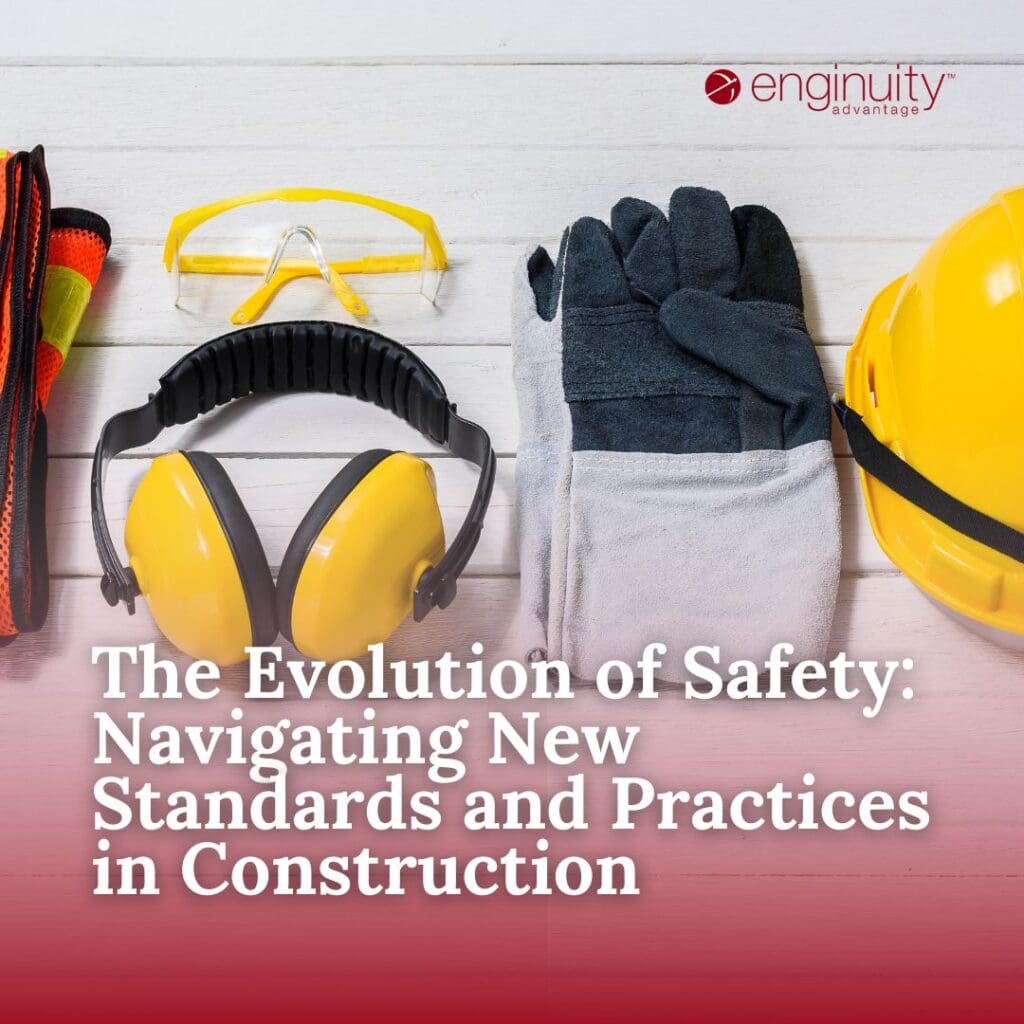Navigating New Standards and Practices in Construction

Safety in the construction industry has always been paramount. Over the years, we’ve seen significant shifts in how safety standards and practices are approached, especially with the integration of new technologies and methodologies. As of 2021, there were 5,190 worker fatalities, with construction and extraction occupations accounting for a significant portion of these deaths.
While these numbers are a stark reminder of the risks involved, they also highlight the industry’s continuous efforts to enhance safety measures. With the landscape of safety in construction undergoing rapid changes, it’s crucial for professionals to stay updated and adapt. Let’s talk about the evolution of safety in construction, exploring how it has transformed and how you can navigate the new standards and practices to ensure a safer work environment.
The Rise of Tech in Safety Protocols
From drones surveying potential hazards to wearable tech monitoring workers’ health in real-time, the technological revolution has reshaped safety measures. Augmented reality now provides instant feedback on site conditions, ensuring workers are always a step ahead of potential risks.
Heavy equipment often has blind spots that pose risks to workers. Real-time awareness and alert systems, which combine sensor tags worn by workers and receivers installed in machines, can reduce these risks. These systems provide machine-to-people awareness, alerting machinery operators of potential dangers within a radius of up to 50 meters.
Technology in construction helps managers improve long-term safety by collecting data from wearable tags and machine-mounted equipment. This data provides insights into unreported incidents, such as near misses, allowing safety planners to refine their strategies.
While safety systems are typically either sensor- or camera-based, combining these technologies can enhance detection capabilities. For instance, sensors can monitor surroundings in any lighting condition, while cameras provide a visual representation of the environment.
The rapid technological advancements of the past decade suggest that safety solutions will continue to evolve. Augmented reality (AR) and artificial intelligence (AI) are set to play significant roles in the future, with AR allowing operators to “see through” machines and AI enabling more reliable autonomous machine operations.
The “Fatal Four” and Their Impact
OSHA has identified four primary areas responsible for approximately 60% of construction site deaths:
- Falls
- Being struck by an object
- Electrocution
- Getting caught in or between objects
These incidents, often resulting from OSHA standard violations, emphasize the importance of rigorous safety protocols. Proper adherence to safety measures could save nearly 600 workers’ lives annually.
Training & Education: The Key to Safety
With the introduction of new tools and techniques, continuous training is paramount. OSHA offers two primary training levels:
- 10-hour training for all construction workers
- 30-hour training for those in supervisory or safety roles
Upon completion, workers receive either the OSHA 10 or OSHA 30 card, signifying their proficiency in safety standards.
With the influx of new tools and techniques, continuous training has never been more crucial. Digital platforms offer courses on everything from basic safety protocols to advanced equipment handling, ensuring workers are always equipped with the latest knowledge.
Building Safer from the Ground Up
Before the first brick is laid or the first nail is hammered, safety starts with meticulous planning. This involves risk assessments, site evaluations, and identifying potential hazards. By anticipating challenges before they arise, construction teams can implement preventive measures, ensuring that safety is woven into the fabric of the project from day one.
Modern construction methodologies, such as modular and prefabricated construction, are not only efficient but also inherently safer. By constructing parts of a building in a controlled environment, many on-site risks, like adverse weather conditions or site-specific hazards, are mitigated. This reduces the chances of accidents and ensures a smoother construction process.
The integration of technology, such as Building Information Modeling (BIM), allows for virtual simulations of construction processes. This provides an opportunity to identify and address potential safety concerns in a virtual space before they manifest in reality. Drones, for instance, can be used for site inspections, ensuring that hard-to-reach areas are safe and accessible.
Construction Safety can be Challenging
The construction industry’s approach to safety has seen monumental shifts, especially with the advent of new technologies and a deeper understanding of workplace hazards. As professionals, staying updated, continuously learning, and actively promoting a culture of safety are the pillars of ensuring a safe work environment.
Navigating the evolving landscape of construction safety can be challenging, but with the right knowledge and tools, you can ensure a safer future for all. Dive deeper into these strategies, and remember, in construction, safety isn’t just a protocol—it’s a commitment. For more insights and guidance, feel free to reach out!
Looking to be a part of a team that prioritizes safety and innovation? Check out our job openings and join us in shaping the future of construction.
Unlock Dream Careers & Elite Talent: Just One Click Away!


